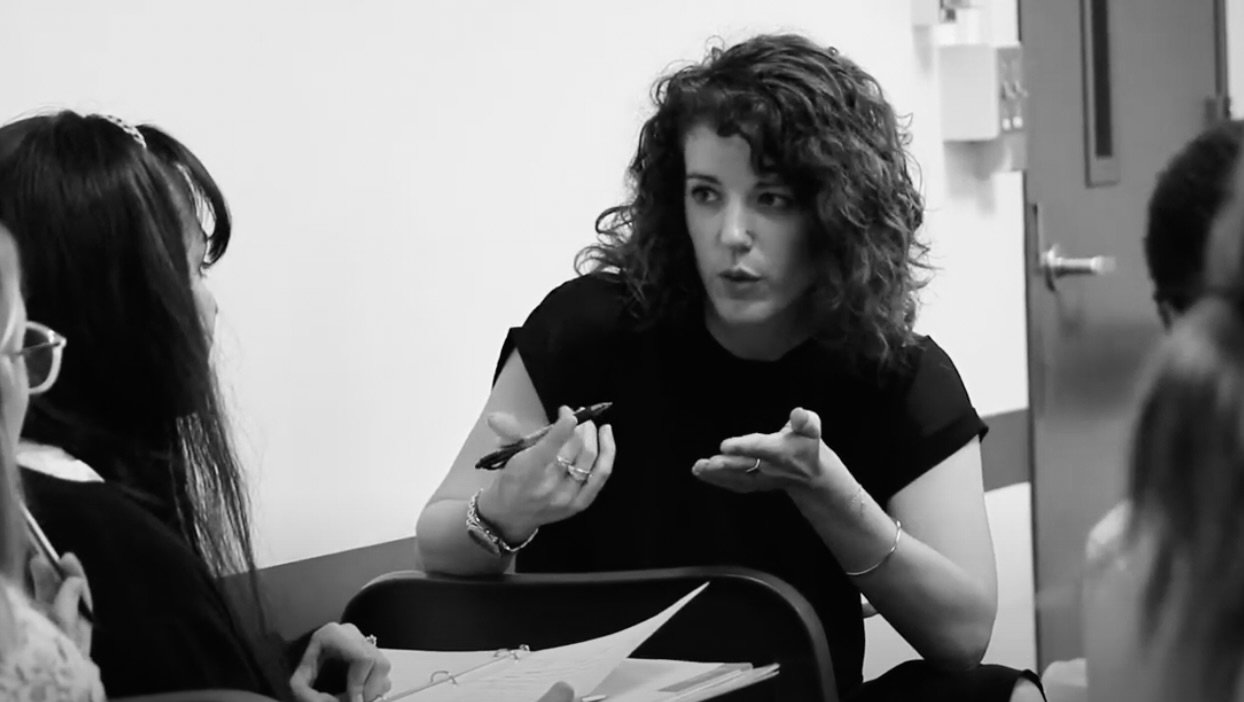My Teaching Philosophy
I am a firm believer that learning another language helps us develop our critical thinking, communication skills, appreciation of others, and different cultures. I have learned greatly from my own experience as a student in France and the United States, and as an English teacher in England, Italy, and a French teacher in the United States. When learning a language, students usually enter the room with affective filters. While I want them to acknowledge these filters, I want my students to challenge themselves and move beyond them to embrace the world with an open mind. From the very first day of a complete beginner class, my students are fully immersed in French with suitable speed and vocabulary at their level, using props and guiding my questions for students to realize they can understand and produce language from day one.
My classes incorporate the Francophone world to spark their awareness of culture, multiplicity, and individual difference in their lives. Through my teaching experiences abroad, I worked with different colleagues and students, be it in age, gender, cultural and ethnic background, or religion. Encouraging diversity is a project that never ends, and that is constantly evolving like the world around us. I believe in showing my students that the French language goes beyond the borders of France. For instance, when focusing on a section of my course discussing Creole, I recorded a non-scripted conversation with a friend of mine from La Réunion. The objective of the activity was twofold. First, students in the class could realize that they were able to understand some of the vocabulary previously learned in class but also to use the context to grasp the main ideas of the conversation. Then, it allowed them to experience the similarities and differences between Creole and French. Students could appreciate the reality of a language that grew from rich and diverse cultures historically ostracized and undermined. More generally, this activity is an example of my commitment to using authentic materials and to putting the students in a real-life situation.
Because students learn better through immersion in a French-speaking context with a communicative approach, learning a language should not be based on materials made for learners but on authentic language materials (comics, YouTube videos, websites, newspaper articles, and flyers), or materials that have real world applications; otherwise, the students will not be able to use the target language outside of the classroom.
Therefore, in my class, my teaching is based on tangible, real-life and personal knowledge of French language and culture, using as many authentic texts as possible to support the textbook when I must use one. Analyzing authentic materials can be scary for students at first but what matters is to tailor the task to the proficiency level of the student. For instance, when working on the house, I like to show them a video of a house tour from YouTube. First, I ask them vocabulary questions such as “quels meubles est-ce qu’il y a dans le salon ?” Then, in group, I ask them to discuss the differences between a French house and their house, or to explain why they picked a certain room as their favorite. In my experience, this type of activity generates enthusiasm, and raises the motivation level for students who engage more with the material. When teaching grammar or conjugation, I like to use comics so that the visuals help students understand the story and, together, we can deduct the grammatical rule. I also like to use comics without text so that, in groups, students can create their own stories and then share it with the class. It is a place where they can collaboratively develop coherent narratives in which they can express their emotions and values. Communicative activities allow for a more direct and contextualized understanding of how a language works.
My teaching style reflects individual attention and compassion where I wish to put my students in the best conditions to learn and give them all the same chances of learning and success, adapting to their different learning skills and backgrounds. In Fall 2020, I started a YouTube channel where I have created supportive grammar and vocabulary videos for my students, addressing the diversity of students’ learning needs in innovative and compelling ways. While some students prefer to read, some students prefer to listen and those videos address everyone’s needs.
I favor a safe environment in my classroom where students feel comfortable to ask questions and make mistakes from which they can learn. My teaching style helps me reach my ultimate goals: to make sure students enjoy learning French and increase their cultural awareness. I am consistently developing the most effective ways to teach and thinking of ways to improve the class, my teaching style, and the activities that I design. It is important as teachers, to continually work on our teaching techniques, be knowledgeable about the research, and the latest effective trends in teaching.

